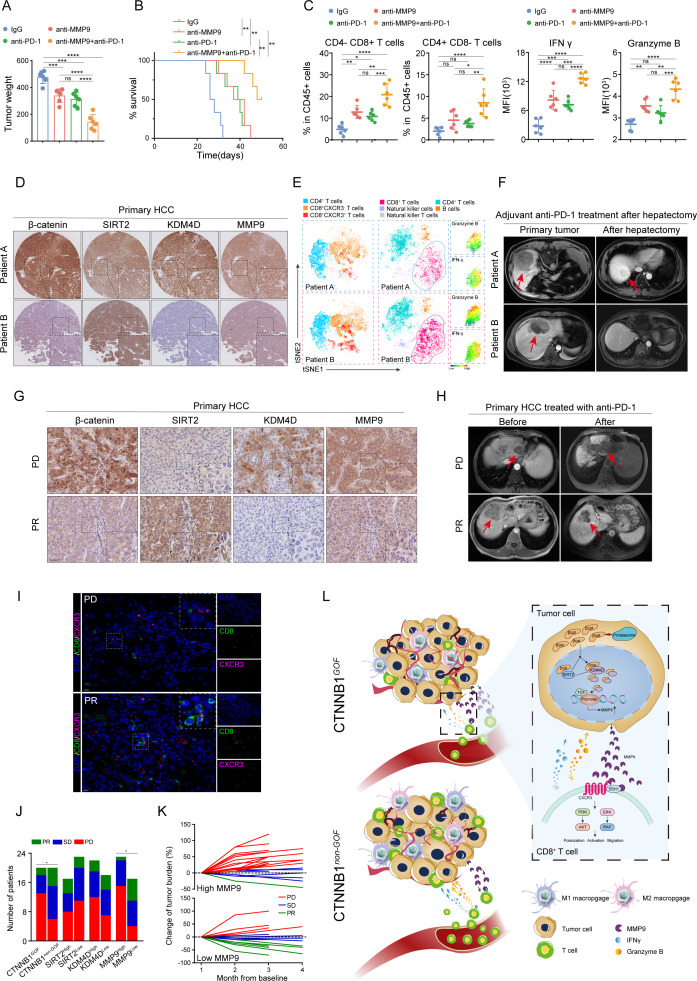Figure 8.
MMP9 confers a valuable therapeutic target and biomarker for immunotherapy in HCC (A) the tumour weight of Hepa1-6 orthotopic models that received the indicated treatments (anti-MMP9, 200 µg/mice; anti-PD-1, 200 µg/mice; IgG, 200 µg/mice, n=6). (B) Survival curves of mice in each group of orthotopic HCC models (n=6). (C) The flow cytometry data results of the proportion of T cells and MFI of granzyme B and IFN-γ on CD8+ T cells in tumour tissue. (D) Representative images of IHC staining for β-catenin, SIRT2, KDM4D and MMP9 in tumour tissue from patients A and B (patient A, a CTNNB1 GOF patient; patient B, a CTNNB1 non-GOF patient). (E) The t-SNE plot in tumour tissue from patients A and B. (F) MRI images of lesions for HCC patients A, B. (G) Representative images of IHC staining for β-catenin, SIRT2, KDM4D and MMP9 in tumour tissue from the PD or PR patients. (H) MRI images of lesions for HCC patients (PD and PR). (I) Representative images of immunofluorescence co-staining for CD8 (green) with CXCR3 (pink) in tumour tissue from the PD or PR patients. (J) Patients were categorised into high and low groups according to β-catenin, SIRT2, KDM4D and MMP9 levels; a correlation analysis of their levels and the efficacy of anti-PD-1 treatment was performed. (K) Patients were categorised into high and low groups according to the MMP9 level in tumour tissue; a fold line diagram was used to detect the changes in the tumour size of HCC patients after anti-PD-1 treatment. (L) Schematic diagram depicting the TIME induced by MMP9 in patients with CTNNB1 GOF HCC. ns, no significance, *p<0.05, **p<0.01, ***p<0.001, ****p<0.0001. Mean±SEM. One-way ANOVA with Tukey’s multiple comparisons test (A, C), log-rank test (B), two-tailed χ2 test (J). ANOVA, analysis of variance; HCC, hepatocellular carcinoma; PD, progressive disease; PR, partial response; SD, stable disease; t-SNE, t-distributed stochastic neighbour embedding.

